APRIL 2023 • Vol. 11 • No.04 (ISSN 2564-1956) 17 10 24 29 9 Ways HR Can Prepare For Work In The Metaverse - Brett Farmiloe, Terkel.io The Ethical Implications Of Using AI In HR - Tatev Baghdasaryan, SuperAnnotate Preparing For AI And The Next Wave Of Automation At Work - Paaras Parker, and Ryan Bergstrom, Paycor How HR Can Build A More Empathetic Workforce With AI And Blockchain Technology - Sony Sung-Chu, Businessolver The Metaverse: Opportunities And Challenges For HR Leaders In Shaping The Future Of Work Exclusive interview with Accenture's Allison Horn Themed Edition on Metaverse and the Future of Work

The Metaverse: Opportunities And Challenges For HR Leaders In Shaping The Future Of Work - Exclusive interview with Allison Horn, MD, Talent and Organization Consulting, Accenture 07 INDEX On the Cover HR Strategy & Planning Excellence APRIL 2023 Vol.11 No.04 (ISSN 2564-1956) Articles 32 Embracing VR Technology For Remote Work Collaboration And Employee Training Challenges, benefits, and future prospects - Ciara Mullarkey, Market Analyst, IDA Ireland 14 Why Companies Should Invest In Their CHROs How CHROs provide significant ROI - Rob Whalen, Co-founder and CEO, PTO Exchange 20 "Now" And "Next" Practices That Highlight How Work Is Changing Embracing ongoing evolution is crucial for businesses to stay relevant in the future - Amy Leschke-Kahle, VP of Performance Acceleration, The Marcus Buckingham Company, an ADP company 27 How ChatGPT And Generative AI Are Streamlining Hiring Processes Key considerations and best practices - Dr. Lindsey Zuloaga, Chief Data Scientist, HireVue Themed Edition on Metaverse and the Future of Work
9 Ways HR Can Prepare For Work In The Metaverse



Navigating communication and collaboration
- Brett Farmiloe, CEO and CHRO, Terkel.io.
The Ethical Implications Of Using AI In HR
Balancing innovation and ethics
- Tatev Baghdasaryan, SEO Specialist, SuperAnnotate
Preparing For AI And The Next Wave Of Automation At Work
How does HR respond?
- Paaras Parker, Chief Human Resources Officer and Ryan Bergstromis, Chief Product Officer, Paycor
Top Picks 10 17 24 29
How HR Can Build A More Empathetic Workforce With AI And Blockchain Technology
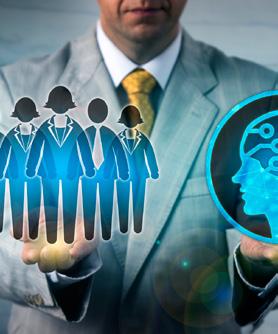
Creating a more efficient, diverse, and empathetic workforce
- Sony Sung-Chu, SVP, Head of Science & Innovation, Businessolver
INDEX
How are our HR Strategy & Planning Products and Ser vices helping to make you smar ter?
HR Strategy & Planning Excellence - Monthly Interactive Learning Journal
This monthly interactive learning experience captures key metrics and actionable items and keeps you focused on your HR strategy and planning goals and solutions.
HR Strategy and Planning Vir tual Events

In HR Strategy and Planning events, discover the business process for ensuring that an organization has suitable access to talent to ensure future business success, trends in strategic planning and analytics, resource requests, analyzing resource utilization, forecasting capacity, and managing human resources. The learning experience offered teaches how to capture key metrics and actionable items and keep you focused on your HR strategy and planning goals and solutions and make them impactful. Each Vir tual Event consists of up to 10 credit webcasts.
HR Strategy and Planning Webcasts for Credit
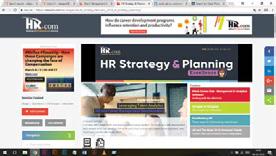
HR.com webcasts deliver the latest HR Strategy and Planning industry news, research trends, best practices and case studies directly to your desktop. Webcasts are available live online with a downloadable podcast and a copy of the slides (PDF) available before and after each
HR.com’s one-hour webcasts, in every HR specialty including HRIS and Payroll, are pre-approved for HRCI and SHRM credit (excluding Demo webcasts).
HR Strategy and Planning Community
Join almost 70,000 HR.com members with a similar interest and focus on workforce planning and analytics. Share content and download reserach repor ts, blogs, and ar ticles, network, and “follow” peers and have them “follow” you in a social network platform to communicate regularly and stay on top of the latest updates. This well established Workforce Planning and Analytics Community is an invaluable resource for any HR professional or manager Use
these invaluable HR Strategy & Planning resources today! For more information phone: 1.877.472.6648 | email: sales@hr.com | www.hr.com
Editorial Purpose
Our mission is to promote personal and professional development based on constructive values, sound ethics, and timeless principles.
Excellence Publications
Debbie McGrath CEO, HR.com - Publisher
Sue Kelley Director (Product, Marketing, and Research)
Babitha Balakrishnan and Deepa Damodaran Excellence Publications Managers and Editors
HR Strategy & Planning Excellence (ISSN

2564-1956)
Babitha Balakrishnan Editor
Chinnavel & Arun Kumar Design and Layout (Digital Magazine)
Chandra Shekar Magazine (Online Version)
Submissions & Correspondence
Please send any correspondence, articles, letters to the editor, and requests to reprint, republish, or excerpt articles to ePubEditors@hr.com
Debbie Mcgrath Publisher, HR.com
Babitha Balakrishnan Editor, HR Strategy & Planning Excellence

to Changing Technologies: How HR Leaders Can Prepare for the Future of Work in the Metaverse
Adapting
The concept of a "metaverse" has gained significant attention in recent years. As technology continues to advance, the potential applications of the metaverse in various industries are becoming increasingly apparent. In particular, the role of Human Resources (HR) in the metaverse is a topic of growing interest. In this new digital landscape, HR professionals must adapt to the changing needs of the workforce and find innovative ways to manage human capital.
The rise of the metaverse presents both opportunities and challenges for HR leaders in shaping the future of work. One of the key advantages of the metaverse is its ability to enhance training and upskilling initiatives. HR leaders can leverage virtual reality (VR) training platforms to drive efficiency and efficacy, while also gaining data-driven insights that inform broader enterprise talent development efforts. By integrating VR training into their strategies, HR leaders can improve employee performance and productivity, and also create a more diverse and inclusive workplace.
However, as with any emerging technology, there are also potential challenges and risks that must be addressed. HR leaders must prioritize safety, security, and privacy concerns to protect their employees in the metaverse. They must also be agile and adaptive to the changing needs of their workforce, particularly in terms of mental health and well-being.
collaboration, human connection, and learning opportunities. She also shares insights on balancing the benefits of incorporating the metaverse into work with concerns around privacy, security, and equity.
Brett Farmiloe (CEO and CHRO, Terkel.io) in his article, 9 Ways HR Can Prepare For Work In The Metaverse, provides useful perspectives on how HR professionals can ready themselves for the integration of the metaverse into the workplace.
Paycor's Paaras Parker (CHRO) and Ryan Bergstrom (CPO) outline how Paycor's employee experience approach can help businesses succeed in the era of artificial intelligence in their article, Preparing For AI And The Next Wave Of Automation At Work.
If you are interested in learning how ethics, responsibility, and bias blend together in areas where AI and human resources meet, Tatev Baghdasaryan's article, The Ethical Implications Of Using AI In HR, is a great read.
In brief, by embracing emerging technologies and addressing potential challenges, companies can create more efficient, diverse, and empathetic workplaces that benefit both employees and the enterprise as a whole. And as we continue to navigate the evolving landscape of work, the metaverse is a promising avenue for driving innovation and growth in the years to come.
For Advertising Opportunities, email: sales@hr.com
For customer service, or information on products and services, call 1-877-472-6648 HR
What can HR leaders do to prepare for the future of work in the metaverse? What are the ethical implications of using AI in HR? Should organizations invest in their CHROs? Get answers to all these questions and more in this edition of HR Strategy & Planning Excellence.
In an exclusive interview with HR.com, Accenture’s Allison Horn (Managing Director, Talent and Organization Consulting) discusses the transformational impact of the metaverse on work, including
We hope you find the articles in this issue informative and helpful and, as always, we welcome your valuable feedback and suggestions.
Happy Reading!
Disclaimer: The views, information, or opinions expressed in the Excellence ePublications are solely those of the authors and do not necessarily represent those of HR.com and its employees. Under no circumstances shall HR.com or its partners or affiliates be responsible or liable for any indirect or incidental damages arising out of these opinions and content.
EDITOR’S NOTE
OR
any form
Copyright © 2023 HR.com. No part of this publication may be reproduced or transmitted in
without written permission from the publisher. Quotations must be credited.
Strategy & Planning Excellence is published monthly
Point, Ontario L0E 1L0 Internet Address: www.hr.com
by HR.com Limited, 56 Malone Road, Jacksons
Subscribe now for $99 / year And get this magazine delivered to your inbox every month Become a Member Today to get it FREE! SIGN UP Write to the Editor at ePubEditors@hr.com
In a world of unparalleled challenges (global pandemic, racial injustice, political rivalry, digital 4.0, emotional malaise), uncertainty reigns. Finding opportunity in this context requires harnessing uncertainty and harnessing starts with reliable, valid, timely, and useful information. The Excellence publications are a superb source of such information. The authors provide insights with impact that will guide thought and action.
Dave Ulrich
Rensis Likert Professor, Ross School of Business, University of Michigan Partner, The RBL Group


Excellence publications are my ‘go-to’ resource for contemporary and actionable information to improve leadership, engagement, results, and retention. Each edition offers rich and diverse perspectives for improving the employee experience and the workplace in general.


 Julie Winkle Giulioni Author, Virtual /Live Keynote Presenter,
Julie Winkle Giulioni Author, Virtual /Live Keynote Presenter,






I regularly read and contribute to Leadership Excellence and Talent Management Excellence. I use many of the articles I read to augment my own presentations and I often share the articles with my clients. They are always quick, right on target for the latest issues in my field, and appreciated by my clients. If you want to stay up to date on the latest HR trends, choose a few of the different issues from the Excellence series of publications.




We’re eager to hear your feedback on our magazines. Let us know your thoughts at ePubEditors@hr.com

WHY EXCELLENCE PUBLICATIONS?
Inc.’s Top 100 Leadership Speakers
Dr. Beverly Kaye CEO, BevKaye&Co.
“By using a VR training platform, such as the metaverse, HR leaders can drive efficiency and efficacy of upskilling initiatives, while also delivering data-driven insights that further inform broader enterprise talent development efforts,” says Allison Horn, Managing Director, Talent and Organization Consulting, Accenture.

In an exclusive interview with HR.com, Allison discusses the transformational impact of the metaverse on work, including collaboration, human connection, and learning opportunities. She emphasizes the importance of addressing safety, security, and privacy concerns, while also harnessing the potential of emerging technologies.
The Metaverse: Opportunities And Challenges For HR Leaders In Shaping The Future Of Work

Excerpts from the interview:
Q.How do you think the metaverse will change how we work, and what should HR leaders be doing to prepare for this shift?
Allison: The metaverse will revolutionize how we work by creating new opportunities for collaboration, human connection and learning. Whether in 2D or 3D, immersive learning is unique in its durability and ability to scale at a consistent level of quality –meaning, the more likely that skill gets applied when needed. HR leaders should develop a strategy that balances current demands against future goals. This could mean pairing with innovative capabilities — such as generative AI — to create more authentic learning environments or to personalize in ways that feel distinctly human.
Submit Your Articles HR Strategy & Planning Excellence presented by HR.com April 2023 7
Straight Talk with HR.com
COVER ARTICLE
Q&A with Allison Horn, Managing Director, Talent and Organization Consulting, Accenture
Allison: The potential of the metaverse in the corporate world is significant, offering opportunities for innovation, product and service transformation. When paired with generative AI, there is immense potential to enhance collaboration, accelerate content creation and augment cross-functional learning in the metaverse. Just as many dismissed the rise of digital business —or approached the web as simply digitizing a piece of paper — leaders are at a critical inflection point; a seminal moment that can, and will, pass them by if they don’t act now.
In California, for example, our work with a utility company is enhancing worker safety by simulating environments where decision-making is closely tied to safety, and practicing skills before entering the field. With just a headset, a user can learn how to identify and respond to issues, while practicing and preparing for the real world.
However, to ensure success, companies must also address user concerns around safety, security, and privacy. By putting trust at the core of a metaverse strategy, organizations will be able to build experiences that employees are eager to engage and return to, as they’ll feel free to express their authentic and unique selves in a safe and respectful manner.
Q.With the rise of remote work and the metaverse, how
do you think HR leaders can ensure employee engagement and collaboration while working in virtual environments?
Allison: HR leaders embracing new approaches to skilling and talent development will find ample opportunity for engagement in omni-connected experiences where workers can participate, socialize
and feel a sense of belonging, regardless of the geographic location. Digital twins of physical offices become familiar environments where employees can meet to network and collaborate while working through real-life operating scenarios.
In our Nth Floor, Accenture has onboarded 185,000 new hires in the metaverse, which is not only crucial to our company culture, but creates additional learning opportunities and feedback sessions throughout the remainder of an employee’s first year.
A visit to our virtual campus includes engaging in exhibits and learning games, such as the “Global Coffee Challenge," based on challenges facing a fictional company. Small teams work together to search the virtual world for clues, where along the way they experience many of the same challenges our clients face — supply chain issues, staffing shortages, production problems. While working together to find solutions, teams build stronger connections and deepen their understanding of the type of work Accenture does.
Q.How can companies balance the benefits of incorporating the metaverse into work with concerns around privacy, security, and equity?
Allison: This evolution of business requires a framework that is responsible for design. Leaders must first establish strong principles to guide the development of technologies and platforms within a diverse community of stakeholders. Within Accenture’s own workforce, we are prioritizing digital accessibility and inclusive design at scale – capitalizing on capabilities, such as accessing experiences in 2D and 3D, while advising our device and content partners on ways of embedding accessibility into future roadmaps.
Research shows safety is the top priority in virtual environments, so companies must invest in predictive and real-time detection capabilities, as well as in-world features to empower users to manage their own safety and mirror experiences in the physical world. This will drive the adoption and acceptance of the underlying technology.
Submit Your Articles HR Strategy & Planning Excellence presented by HR.com April 2023 8
Q.Accenture has been exploring the potential of the metaverse and how it can be leveraged to enhance collaboration and learning for its employees. What potential opportunities and challenges do you see in adopting the metaverse in the corporate world?
Straight Talk with HR.com
Q.Howwill the shift towards a metaverse future of work impact the skills and competencies employees need, and what steps can HR leaders take to develop these skills in their workforce?
Allison: Both the metaverse and generative AI are having an immediate disruption in the traditional workforce models as organizations are radically rethinking how work gets done. In the long term, leaders must look to invest in reskilling and task redesign to fully harness the potential of these emerging technologies.
By using a VR training platform, such as the metaverse, HR leaders can drive efficiency and efficacy of upskilling initiatives, while also delivering data-driven insights that further inform broader enterprise talent development efforts.

Generative AI can then teach systems to separate irrelevant data from data insights, helping to overcome potential biases. Lastly, don’t forget to start small. Emerging technologies can invariably involve a few hiccups to slowly build employees’ comfort and expertise in immersive environments..
Would you like to comment?
Submit Your Articles HR Strategy & Planning Excellence presented by HR.com April 2023 9
Straight Talk with HR.com
9 Ways HR Can Prepare For Work In The Metaverse
Navigating communication and collaboration
By Brett Farmiloe, Terkel.io
From researching the tools you’ll use in the Metaverse to avoiding wasting time, here are nine answers to the question, “The world of remote work will get even more virtual with the rise in meta-offices. Give tips for how HR can prepare to work in the metaverse?”
● Use 3D Models
● Set Up Meta-Offices to Manage Mental Health
● Leverage Gamification
● Outline Roles and Responsibilities With AR Interviews
● Protect Employees With Comprehensive Privacy Policies
● Start Virtual Training Sooner Than Later
● Be More Agile and Adaptive
● EQ Awareness and DISC Will Drive Successful Collaboration
● Don’t Plan for Anything Yet
Use 3D Models
Think of the Metaverse as Zoom with extra tools. Instead of a flat image with occasional screensharing, you’ll be in a three-dimensional space with other people, using tools that often can only exist in augmented reality. Imagine not just having a whiteboard, but being able to build 3D models in real-time with a few hand gestures to illustrate your ideas.
These models can take up the entire room while your team takes a virtual tour of it and adds their nodes. There are no boundaries to productivity in the Metaverse. So, start researching all the tools you can use in this space, and get familiar with them. Then, train your people to use them, too. You need to make it obvious that using the Metaverse for work will bring extra benefits, beyond Zoom, to acceptance from the team.
Dennis Consorte, Digital Marketing and Leadership Consultant for Startups, Snackable Solutions

Submit Your Articles HR Strategy & Planning Excellence presented by HR.com April 2023 10
TOP PICK
Set Up Meta-Offices to Manage Mental Health
There is one key tip that stands out: proactively managing remote employees’ mental health and well-being. Remote work can be a challenge for both employers and employees, as it often involves changes to workplace culture and communication practices.
To help build an inclusive, productive, and healthy virtual environment, HR teams should focus on initiatives to provide resources that help remote workers learn better emotional management techniques, such as meditation or mindfulness. Employers can provide free subscriptions for meditation apps or organize virtual social events where participants exchange their coping strategies with each other.
This initiative should go hand in hand with regularly checking in on your remote team members and setting up clear expectations for communication protocols. Encourage team members to maintain regular contact with each other through text, audio, or video calls instead of relying solely on emailing.
work experience that keeps your employees motivated, productive, and connected. You can use gamification to track employees’ progress and reward them to achieve their goals. Offering badges and virtual rewards for completing tasks or hitting milestones can inspire a sense of accomplishment and drive employee engagement in the metaverse.
Piotrek Sosnowski, Chief People and Culture Officer, natu.care


Outline Roles and Responsibilities With AR Interviews
The world of remote work is rapidly developing with the rise of meta-offices, making it increasingly important for HR leaders and consultants to prepare adequately.
Travis Lindemoen, Managing Director, nexus IT group

Leverage Gamification
We can add excitement to our workplace by transforming everyday tasks into thrilling challenges and rewarding and recognizing accomplishments, big and small, through gamification. This is the power of gamification, and in the metaverse, you can bring this excitement to your virtual teams.
Adding game elements to work activities allows you to create a dynamic and engaging
Outline the roles and responsibilities associated with virtual workplaces among team members ahead of time. For example, while many applicants may be familiar with standard video interviewing platforms, HR should implement augmented reality (AR) interviews to get an even better picture of their candidates’ skill sets.
AR interviews would allow hiring managers to see how someone works outside of their comfort zone using 3D virtual models or diagrams, helping them make more informed decisions.
Grace He, People and Culture Director, teambuilding.com
Submit Your Articles HR Strategy & Planning Excellence presented by HR.com April 2023 11
9 Ways HR Can Prepare For Work In The Metaverse
Protect Employees With Comprehensive Privacy Policies
As we witness the rise of meta offices, we must acknowledge the unique challenges they pose. For example, security policies that address everything from cybersecurity threats to confidential data need careful consideration when developing guidelines.
Considering this, HR professionals should establish comprehensive privacy policies to protect employees’ personal information in a shared virtual workspace. Setting up training programs on how these new systems work will help everyone involved stay informed about company policy changes and system updates.

As an HR professional myself, I firmly believe in embracing experimentation with new technologies and processes, as they are essential in adapting to this new way of working. By encouraging a culture of innovation and experimentation, HR professionals can set an example for others who may feel hesitant about change.
Be More Agile and Adaptive
Samuel Johns, CPRW and Career Counselor, Resume Genius

Start Virtual Training Sooner Than Later
One of the biggest advantages of the Metaverse will be the ability to train new and existing employees. Adapting to people’s different schedules or finding a place to do the training will make a big difference. I would recommend that companies that rely heavily on in-person training do more virtual training to help with future change management.
HR professionals should take an active approach to understand the virtual space—what works best, how different systems connect, and how to maintain employee involvement—as well as knowing how to recognize and reward employee success in the new setup.
HR should also know meta offices are more flexible and open-ended than physical offices—meaning they have to be prepared to adjust rules, processes, and policies as needed while treating all employees fairly.
HR will need to be more agile and adaptive and ready to embrace the opportunities presented by the meta office. Finally, HR should take the lead in helping employees get comfortable working in this new environment—providing guidance and education on how to maximize their potential in it.
Tim Hiller, Senior Manager, Surety Systems
Darren Shafae, Founder, ResumeBlaze


Submit Your Articles HR Strategy & Planning Excellence presented by HR.com April 2023 12
9 Ways HR Can Prepare For Work In The Metaverse
Don’t Plan for Anything Yet
A meta-office is more of a pipe dream than anything that HR leaders need to worry about for the next few decades. The entire thing is still in the same realm as the entire blockchain craze—suddenly everyone was talking about it, and no one knew how it was supposed to work or why it would be beneficial.

The technology wasn’t there yet, the work culture wasn’t there yet and, frankly, employees weren’t there yet for whom this would be any sort of advantage. Maybe 20 years down the line, we can talk about it, but making preparations for a meta-office now is a waste of time.
EQ Awareness and DISC Will Drive Successful Collaboration
As a former Learning & Development leader, I know “training” is not the answer for everything. The nuances of the metaverse are going to be learned quickly. I believe the area of opportunity and solution for HR to create successful employees in this space is by sticking to old-school practices of ensuring emotional intelligence and providing a succinct way for people to still communicate effectively.

Be it through a VR headset or an avatar face that speaks like you, we’re still going to need to understand human nature. DISC Assessments that help others understand their style and others will help immensely with self-awareness. Your personality is still going to come through that headset.
The more aware you are of your fears, motivators, preferred tasks, limitations, or stressors, the more you’ll have successful collaborative partnerships in a virtual space. Let’s not allow tech to dictate how we behave, but let’s use the tech to double down on ensuring human behavior doesn’t go awry behind a digital face.
Ayanna Jackson, Founder and Career Development Leader, AEJ Consulting
 Dragos Badea, CEO, Yarooms
Dragos Badea, CEO, Yarooms
Would you like to comment?

Submit Your Articles HR Strategy & Planning Excellence presented by HR.com April 2023 13
Brett Farmiloe is the Founder/CEO and currently the CHRO of Terkel.io
9 Ways HR Can Prepare For Work In The Metaverse
Why Companies Should Invest In Their CHROs
How CHROs provide significant ROI
By Rob Whalen, PTO Exchange
Withstubborn inflation, banking crises, and other economic woes filling the headlines, many companies are searching for ways to cut costs and improve their financial health. This often means reducing headcount, as employee salaries, benefits, and wellness programs are typically a company’s largest expenditures. However, the process of cutting staff should be approached with extreme caution, as your workforce is your most valuable asset and cutting employees recklessly can cause severe damage to your culture and productivity.
Some layoffs are more harmful than others. For example, CHROs and their teams are integral to keeping the rest of your workforce engaged and attracting high-quality talent – a role that provides significant ROI over time. An effective hiring, onboarding, and employee retention strategy is critical to keeping companies competitive, especially in a hot labor market that has shown surprising resilience in the face of inflation. Instead of viewing CHROs as a potential line item to be slashed, CEOs and CFOs should view them as strategic partners who can ultimately help the company strengthen its balance sheet.
In times of economic crisis, companies have to weigh the short-term benefits of increasing their cash on hand with the long-term costs of undermining their workforce, culture, and operations. By providing guidance on how companies can fully leverage their human capital, CHROs don’t just improve morale and
reduce turnover; they also increase efficiency and put companies in a more sustainable financial position.
Reassessing the Value of Your Workforce
While some companies are attempting to reduce their overhead with layoffs and hiring freezes, the more pressing concern for many hiring managers is a lack of qualified candidates. Despite persistent inflation, there are still around two job openings for every candidate in the United States, a ratio that has been constant since last fall. As the demand for talent remains strong, CHROs are crucial for ensuring that companies are building the right people strategies.
Rather than regarding human capital as a drain on the company’s resources, CEOs and other members of the C-suite should recognize that their workforce is the most powerful revenue generator they have. Employees are a company’s biggest expense and greatest asset – they’re the source of all innovation, they drive customer loyalty, and they’re responsible for maintaining efficient daily operations. However, there are more ways to mismanage your workforce than to fully leverage it, which is why the role of the CHRO is only becoming more essential.
CHROs shouldn’t be at odds with their colleagues in the C-suite; instead, they should work in harmony with the CEO, CFO, and other company leaders to build a people-focused workplace and business plan. This means meeting employees’ demands for internal mobility and professional development
Submit Your Articles HR Strategy & Planning Excellence presented by HR.com April 2023 14
(which is especially important in a tight labor market), reevaluating benefits packages to provide employees with greater support and flexibility, and determining how human capital should be deployed at every level of the company.
Building a More Effective People Strategy
In a competitive labor market, the ability to retain talent and get the right people into the right roles offers a major competitive advantage. According to a recent survey of hiring professionals conducted by the Society for Human Resource Management (SHRM), the second-biggest cause of turnover is a “lack of career advancement and development.” This is a striking reminder that companies are failing to provide employees with the educational opportunities and professional support they want, which is causing them to lose people and sacrifice productivity.
The SHRM survey reflects other research, such as a LinkedIn study, which found that companies capable of excelling at talent mobility retain employees for an average of 5.4 years. On the other hand, companies that struggle with it see average employee retention of 2.9 years. SHRM also reports that the third most-cited cause of turnover is a “lack of workplace flexibility.” Employees don’t just want options when it comes to their roles, workplace education,

and professional aspirations; they also want the ability to work where and how they like, flexible scheduling, and access to benefits that meet their individual needs.
A good CHRO should be familiar with employees’ concerns about stress, burnout, diversity and inclusion, mental health, and a wide range of other issues that affect morale and performance. A 2022 survey found that 58 percent of employees say their job is the primary cause of their mental health challenges. It’s clear that companies need to be more proactive in taking care of their people, and the CHRO can give them the tools and insight they need to do so.
Reframing the Role of the CHRO
CHROs have become more strategic and growth-oriented than ever before. Companies are increasingly recognizing that employee engagement and satisfaction are vital for business growth – and more reliance on CHROs. Just 21 percent of employees are engaged at work, and Gallup estimates that this has cost companies $7.8 trillion in lost productivity. Gallup also found that top performers on employee engagement saw 23 percent higher profitability, 10 percent higher customer loyalty, and much lower turnover.
Submit Your Articles HR Strategy & Planning Excellence presented by HR.com April 2023 15
Why Companies Should Invest In Their CHROs
The CHRO can generate significant ROI by implementing benefits programs that employees will actually use (thereby decreasing turnover), allocating human capital more productively, establishing clear paths for talent mobility, and making informed hiring and retention decisions. CHROs serve as a liaison between employees and the C-suite, and they have access to data on turnover rates, benefit adoption, engagement, and a wide range of other indicators of workforce health. By using this data to address employees’ needs and improve performance, CHROs will provide healthy ROI for companies that invest in them.
CHROs and their teams are even more critical during periods of economic volatility, as they help companies make pivotal decisions about the composition of their workforces and ensure that employees’ needs are being met. When companies treat CHROs as strategic partners and managers of


their most valuable assets – their people – they will see steadily increasing ROI in the years to come.
Rob Whalen is the Co-founder and CEO of PTO Exchange While building the company, Rob and his co-founder, Todd Lucas, found their mission was to enable flexibility into those benefits that employees earned but could not utilize. They also discovered that by enabling this capability and accountability, PTO Exchange created equity and inclusion for workers to be compensated for their accrued productivity creating a better benefit.
Would you like to comment?
Submit Your Articles HR Strategy & Planning Excellence presented by HR.com April 2023 16
Why Companies Should Invest In Their CHROs
The Ethical Implications Of Using AI In HR
Balancing innovation and ethics
By Tatev Baghdasaryan, SuperAnnotate
Artificial intelligence is a technology that enables software and computer systems to make decisions in the same way that humans do. It assists computers in thinking, whereas computer vision helps them perceive and comprehend their environment. Machine learning algorithms evaluate data to detect underlying trends and patterns to refine predictions and improve the results.
Human resources are so heavily reliant on people, yet artificial intelligence adds a special sauce as it allows managers to make swift strategic judgments based on employee data. Such data-driven decisions improve the experience of employees at the company, boost their satisfaction rates, and establish effective policies. All that only thanks to ethical, responsible, and bias-free AI, which we’ll focus on moving ahead.
The Impact of Artificial Intelligence on Human Resources
The use of AI and ML technology in human resources–particularly in recruitment–has accelerated as the industry attempts to improve efficiencies and save costs.
The dawn of remote working has opened up worldwide talent pools for organizations to fish in, job advertising has been in high demand, and artificial intelligence has played a significant role in assisting enterprises in narrowing the field and finding their next hires.
A survey conducted at the peak of the pandemic indicated that nearly a quarter (25%) of human resource professionals would “likely be adopting artificial intelligence for recruitment to a high degree within the next two years.” Now, AI-powered solutions can assist in all stages of the recruitment process, from aggregating job openings and connecting them to potentially qualified people to boost candidate assessment. Imagine, however, a system that conducts all those functions by discriminating against gender, for instance. Where does that put the company from an ethical standpoint?
Ways Ethical AI Redefines the HR Sector
The role of AI in a work environment is often misinterpreted. AI is usually seen as a prospective replacement for – and thus a danger to – employees. After all, AI systems can potentially outperform humans in activities involving analysis, decisionmaking, etc. They can also carry out these duties on a remarkably large scale. Many concerns have arisen as to how this exponentially growing technology would affect the HR sector. Some believe that these technologies are a breakthrough in HR, promising to assist organizations in improving their ability to find the right person for the right job faster and cheaper than ever before.
Despite these benefits, the aim of AI in organizations is not to replace humans but to assist them in performing better without crossing ethical boundaries. The most effective method AI adds value
Submit Your Articles HR Strategy & Planning Excellence presented by HR.com April 2023 17
Top Pick
to human resource management is by streamlining specific HR functions.
Artificial intelligence for HR management improves employee experiences company-wide by allowing for life cycle management, from recruitment to retirement, with more ease and efficiency.
Finally, AI-powered HR automation allows HR professionals to spend less time on regular duties and more time assisting people and increasing their performance. As a result, an increasing number of businesses are implementing AI technology to help their human resource departments.
Understanding the Mechanics of Bias
Despite the promising prospects, AI-enabled solutions are not flawless. The latter relies on training data fed beforehand to generate the desired outcome. If the data is biased anyhow, meaning certain elements/classes are more heavily represented than others, there is no way you can achieve objectivity in the final rollout. Let’s consider an example of an AI recruitment framework. Hypothetically, if the framework is introduced, say, 20 CV samples, of which 15 have graduate degrees as labeled data, the framework will prefer those with graduate degrees even if other candidates are more suitable for the job because of their experience. It will keep reinforcing this bias by always picking individuals with a degree. On the other hand, bias can be reduced in hiring if the data is gathered carefully and the model has undergone comprehensive training.
Responsible AI in Principle and Practice
Along with innovation, there also comes unprecedented responsibility, as the output of AI has a massive bearing on humans. Analogous responsibility is reliant on three elements: trust, legality, and data governance. The idea and intentions behind responsible AI are invested in preventing or successfully solving challenges along the way of cultivating an AI-enabled solution. As an umbrella term, responsible AI addresses all aspects of ethics, including accountability, democratization, and anti-discrimination. Having standards in place for accountability can, however, end up in a vicious cycle
if causes of bias are not investigated as needed. To that end, your responsible AI framework should be all of the following: explainable, justifiable, monitorable, unbiased, secure, reproducible, and human-centered. These characteristics pertain to every area of human resources where AI is deployed.
From AI Ethics to Implementation
We’ll further explore how ethics, responsibility and bias blend together in areas where AI and human resources meet.
Talent Acquisition
Recruiting or talent acquisition is one of the core responsibilities of HR departments. Screening personal data, analyzing CVs, scheduling interviews, and communicating with candidates to answer their questions are all a part of the process. Maintaining a database with all this information can be timeconsuming, and if done manually, it can divert valuable resources away from other value-added tasks. In the same way, manual methods can extend the time required to hire a new employee. In a nutshell, without AI, there’s too much back and forth, and manual effort involved, which is at risk of being violated without proper AI governance.
Today, you can use chatbots to engage with potential clients and reduce the list to only the folks who fit the job description best with the help of artificial intelligence and machine learning. In addition, there is a selection of tools to send automatic interview invites and schedule meetings without much of your intervention. Imagine the amount of data required for the tool to conduct all that on its own. A key precaution here is keeping data secure as part of an AI governance strategy.
Employee Onboarding
After you’ve hired the best applicant, the human resource department is in charge of onboarding the new candidate. AI may assist workers in learning everything from corporate policies and procedures to crucial information about their team members and specific tasks by incorporating it into the onboarding process. An efficient onboarding process is demonstrated to increase employee retention and productivity. An important question to keep in mind:
Submit Your Articles HR Strategy & Planning Excellence presented by HR.com April 2023 18 The Ethical Implications Of Using AI In HR
How does your AI monitor employee progress, and how do you address bias-free, spot-on estimation?

Cognitive Decision-Making
A study by IBM also demonstrated how cognitive engines could assist in making daily decisions that the human resource department would normally handle. A few noteworthy examples are provided here.
One of these has to do with AI’s capacity to analyze audio. By analyzing an employee’s sentiments and mood swings, the model can come up with useful recommendations, like encouraging them to take a break before attending a crucial meeting with the management. Now, imagine a system that has been trained based on biased data. System recommendations not only trigger wrong alerts but can also have emotionally manipulative effects on staff members violating the code of ethics if any.
Another example is benefit optimization: Whenever an employee wishes to take additional vacation days, they do not need to consult with the human resource department. With access to an employee database, AI can determine those who have already scheduled a vacation for a given period and help employees schedule their own without potential overlaps within departments if that’s required.
Talent Management
As an add-on to talent acquisition, talent management entails maintaining high-quality personnel while upgrading their abilities and consistently motivating employees to stay with the organization.
Artificial intelligence advancements in personnel management can include algorithms that help anticipate the likelihood of an employee leaving by examining employee data such as compensation and reward, time in the role, and performance scores. The benefits of this allow human resource and people managers to be aware of possible issues before they exist, allowing interventions to take action before things worsen. Nonetheless, the motifs behind people leaving organizations vary, and AI cannot take personal reasons into consideration if those aren’t
disclosed by employees—another example of bias in artificial intelligence.
Inclusion and Equity Promotion
As companies become more aware of minorityrelated issues and increase their efforts in combating the issues of diversity, setting up healthy and democratic environments is becoming increasingly pervasive and can give you a competitive advantage over the rest in the market. Because of globalization and the relative ease of incorporating participants from different backgrounds and cultures, there is a tiny line between creating an inclusive environment and offending representatives of a particular nationality. To provide smooth communication and make sure the language used is free from bias and is ethical, a potential solution can be either having a dedicated public relations professional to polish the messaging or having a natural language processing model oversee further communication processes.
Key Insights
AI isn’t a long shot in the future; it is impacting HR right now. With the right ethical stand, the implementation of AI can simplify human resource procedures with benefits ranging from recruiting and onboarding to professional development. The increased use of ethical and responsive AI frameworks in HR will boost productivity while potentially lowering operating expenses and time spent on tedious, repetitive duties. In addition, ethical AI can also improve the entire employee experience, which will expectedly increase retention rates.
Submit Your Articles HR Strategy & Planning Excellence presented by HR.com April 2023 19 The Ethical Implications Of Using AI In HR
you like to comment?
Tatev Baghdasaryan is an SEO Specialist at SuperAnnotate.
Would
"Now" And "Next" Practices That Highlight How Work Is Changing
Embracing ongoing evolution is crucial for businesses to stay relevant in the future
By Amy Leschke-Kahle, The Marcus Buckingham Company, an ADP company
Are you tired of hearing about how work is changing yet? Hopefully not, because there’s plenty more change to come — and much of it will be the source of long-term success.
Immersed in performance for decades, ADP has a unique perspective on what makes high-performance organizations operate proficiently. We know which approaches are enabling great work in the current setting, but the changes we’re navigating due to the pandemic make it clear that we can’t just cling to today’s best practices.
We need to be proactive in making the transition from “now” practices to “next” practices, and the following principles illustrate why this is the case.
The Ability to Learn Is More important than Knowing
Understanding the requirements for roles and hiring individuals who can meet those requirements are core practices for recruiting and HR professionals, and that won’t change. However, focusing primarily on the value of prior achievements and outcomes alone are no longer sufficient in a world that’s shifting so frequently and so quickly.
We should adopt the “next” practice of prioritizing an individual’s appetite and ability to learn new skills, implement new practices and adopt new mindsets.
I see this often in the technology space, where an organization might hire a programmer because they know an in-demand language like Python. But who knows what programming language or even low-code no-code applications will be most in demand five years from now? The talent you hire today needs to be able to adapt, learn and execute in ways that show they can keep up with how work is changing in your field.
Dynamic Teams Will Outperform Hierarchical Ones
Org charts are an ever-present structural component of every organization. While they provide clarity around formal reporting structures they can also act as false boundaries that restrict collaboration and create unnecessary process. Org charts and the hierarchies they document are important but we must also facilitate an environment where teams of all types flourish and thrive. The fast pace of change during Covid-19 showed us that the most effective teams are those that operate as dynamic, adaptable networks of individuals, not rigid structures of higher-ups and subordinates.
Submit Your Articles HR Strategy & Planning Excellence presented by HR.com April 2023 20
This is not new information at ADP. We’ve known for a long time that the best work happens in complex and connected networks, not hierarchies. In fact, in 2018, we found that people who said they were on teams were 2.3 times more likely to be “fully engaged” than those who said they weren’t, which was true across all countries studied. Hierarchies and dynamic teams are not exclusive, independent frameworks. Both are critical to getting work done effectively, efficiently and collaboratively.
Tech is an Enabler, Not Just a Precursor
For much of the story of people and business, technology has been a precursor to innovation. After all, when a new technology comes into being, it often creates the possibility of doing something new. For example, we had to have Internet access before we could have Internet apps.
However, the “next” practice that is upon us is to treat technology not only as a factor that makes our work possible but also as an enabler of more efficient and dynamic approaches to work in a changing business landscape. Technology can now support unprecedented connectivity, visibility and coordination at all levels of an organization, and these factors are more critical to business success than ever in an era of remote work. Embracing technology solutions that facilitate greater communication and cooperation between
team members will remain crucial as employees and organizations settle into a more flexible, hybrid work environment.

The Ongoing Evolution of Work
There is no “new normal.” The progression of work we’re experiencing is a natural result of operating in a constantly changing environment. Technology, customer preferences and personal values are all developing in new directions, so why shouldn’t the way we work also change? Far from an inconvenience, this is the essential path that businesses must walk to stay relevant.
Amy Leschke-Kahle is the Vice President of Performance Acceleration at The Marcus Buckingham Company, an ADP Company, where she collaborates with clients to transform engagement, performance and leadership development based on the unique culture of each organization
Would you like to comment?

Submit Your Articles HR Strategy & Planning Excellence presented by HR.com April 2023 21
"Now" And "Next" Practices That Highlight How Work Is Changing
This story was originally published on SPARK, a blog designed for you and your people by ADP®.
HRCI® & SHRM® CERTIFICATION PREP COURSES
GROUP RATES AVAILABLE
For HR Professionals
Show that management values the importance of the HR function, and has a commitment to development and improvement of HR staff.
Ensure that each person in your HR department has a standard and consistent understanding of policies, procedures, and regulations.
Place your HR team in a certification program as a rewarding team building achievement.
For Your Organization
Certified HR professionals help companies avoid risk by understanding compliance, laws, and regulations to properly manage your workforce.
HR Professionals lead employee engagement and development programs saving the company money through lower turnover and greater productivity and engagement.
A skilled HR professional can track important KPIs for the organization to make a major impact on strategic decisions and objectives, including: succession planning, staffing, and forecasting.
HR.com/prepcourse CALL TODAY TO FIND OUT MORE 1.877.472.6648 ext. 3 | sales@hr.com
1 Less expensive than a masters or PhD program, and very manageable to prepare with
2. legislation and best practices
3. Recognized, Industry benchmark, held by 500,000+ HR Professionals
Group Rate Options
We offer group rates for teams of 5+ or more for our regularly scheduled PHR/SPHR/ SHRM or aPHR courses.
For groups of 12+, we can design a more customized experience that meets your overall length of the course.
Groups rates for HRCI exams are also available as an add-on.
All group purchases come with 1 year of HR Prime membership for each attendee to gain the tools and updates needed to stay informed and compliant

CALL TODAY TO FIND OUT MORE 1.877.472.6648 ext. 3 | sales@hr.com | HR.com/prepcourse
1 2 3
Preparing For AI And The Next Wave Of Automation At Work

How does HR respond?
By Paaras Parker, and Ryan Bergstrom, Paycor
AI is Here. Now What?
Suddenly, AI is everywhere, or else it’s “coming soon.” Google CEO Sundar Pichai says AI is a more profound invention than electricity OpenAI’s mission is to usher in artificial general intelligence (see every science fiction movie ever made for examples) so that it may “empower humanity to maximally flourish in the universe.” While AI is not new to the industry, it’s played a role in overall product roadmaps and business processes for years. We are living in a hype cycle, so expect to hear that everything, from your toaster to your inbox, is now AI-powered.
AI Comes to Inboxes Everywhere
As the New York Times observed, “for all the talk about the transformative nature of [the] new technology…the earlier commercial uses may be far more prosaic: formatting a PowerPoint slide, summarizing a call or writing a to-do list.”
We’re going to have a chance to explore what “prosaic” actually means when Microsoft launches CoPilot in a “couple months.” Microsoft Office 365 CoPilot promises to give users the ability to “talk” to the Office product suite. It’s anyone’s guess how much hype is in the hype video. But let’s assume that by summer, we’ll be able to ask Office products to write an email, generate the next steps from a meeting, create a rough draft of a presentation,
analyze an Excel report, and more, with results in the B to B+ range. Let’s also assume that Microsoft understands the rigorous safety standards the IT and legal departments of public companies expect from new technology and wouldn’t bet the farm on risky AI.
How Does HR Respond?
Much will depend on your situation, your organization, and your industry. There’s no cookie-cutter, fill-in-the-blank “AI policy” template, no exact 10-step plan..
Submit Your Articles HR Strategy & Planning Excellence presented by HR.com April 2023 24
TOP PICK
In March 2020, every business on earth had to make systemic, business-critical decisions on an accelerated timeline. Paycor decided to go virtual first and let (most, not all) our teams “work from anywhere.” This was not a rash decision, but it was an accelerated one.
Prior to the pandemic, companies had experimented with remote, distributed work. Employees had to be trained on the best practices of remote work, companies had to organize company-wide in-person events that gradually became part of the larger employee experience and culture. In time, teams learned to work more productively, efficiently, and creatively.
Everyone, at all levels, had to execute a plan in the most volatile and unpredictable of circumstances. It was a stress test for every business because prior to March 2020, you hired people based on their demonstrated subject matter expertise and technical skills, or on their potential to be excellent in a role; no one hired workers who had experience managing through a global pandemic. It was new to everyone and so no one was exactly prepared.
What March 2020 Teaches Us About AI
Here’s what Paycor learned from the pandemic. When you hire the right people and you provide great managers with ways to empower their teams, coach, support, and develop them, you can face down a pandemic. It turned out that our pre-pandemic hiring process
managed to select employees who could adapt, be flexible, find solutions, collaborate, and win together. It also turned out that our ability to identify, train, and promote leaders came in handy as well. As the pandemic forced us to discover new best practices, new leaders emerged at every level, throughout the organization.
When the going got tough, teams grew closer. When we succeeded, we developed new ways to celebrate. When we finally began to meet again in person, at team events or at company-wide gatherings, there was a palpable feeling of not only relief, but confidence, and comradery, and pride. We got through it. We did it.
Paycor’s pre-pandemic approach to the employee experience—to hire the right people and support them with great leaders they trust and respect—turned out to be the right response to an unforeseen global disruption. And we believe it will be the right approach to discover the opportunities in AI.
AI is Best Deployed Against Mission-Critical Objectives
Paycor’s mission is to empower leaders to build winning teams. We know firsthand it’s the best way to achieve business success. And so, we continue to use AI as another technology to create the first HCM platform truly purpose-built for leaders.
We’re not interested in bells and whistles, and we don’t think the solution is to “add AI” to every digital interaction. Instead, we want to use AI to deliver real value to leaders.
And one of the most important drivers of leadership success is effective hiring. The talent shortage is here to stay. By now, the facts are familiar. As demand for productivity gains increase, all industries face talent shortages, due to (pick your poison): decades of declining birth rates, accelerating retirements, the loss of institutional knowledge, lower immigration, a dearth of technical skills. With the projected talent shortages, finding and recruiting, and then developing and retaining, employees is the top business priority of the foreseeable future.
From our own experience, hiring the right people is half the battle.
The other half is giving the talented people you hire all the tools, training, and support they need to succeed; and all of that—the entire employee experience—is anchored in their relationship with their immediate supervisor, manager, or leader.
What Happens Next?
Summer 2023 might go down as a milestone in how AI gets adopted into the mainstream. Presumably by then, Microsoft CoPilot will give users the ability to work with Office products in an entirely new way. If all goes well, it will be like everyone gets an AI personal assistant. (And then Google will launch their own consumer productivity tools.)
Submit Your Articles HR Strategy & Planning Excellence presented by HR.com April 2023 25
Preparing For AI And The Next Wave Of Automation At Work
Internally, Paycor will face the opportunity of AI in much the same way we dealt with the challenge of Covid-19. The first principles remain the same. To manage change, all organizations need OKRs, and they need to be cascaded throughout the company. Frontline managers need to understand, through weekly one-on-ones with their direct reports, how each individual contributor can contribute to the shared goals of the organization.
Managers need to enroll and engage their team members in the broader vision, show them attractive, challenging career paths, and provide the continuous feedback and training needed to give each employee personal momentum. As organizations large and small discover new ways to work, as they realize potentially significant productivity gains, the playbook is the same: empower your leaders to build winning teams—and then let those teams bring their expertise and passion to reinvent the way work gets done.
We Believe in AI Abundance
There is a lot of understandable anxiety about what the AI era will mean, especially when so much is still up in the air. As of now, it appears some AI-assisted work is not eligible for copyright protection. The consumer space is flooded with AI apps, some of which will almost certainly come under government scrutiny. And expert opinion varies widely, with some predicting that AI will replace entire categories of employment, while others project millions of


new jobs created, perhaps sooner than the average person expects.
From a product perspective, we still believe the most important value we can give to our customers remains the same. Paycor wants to empower leaders to build winning teams. And AI is an exciting technology that helps us achieve that goal. Our product teams are now leveraging AI technologies to

● Make leaders more efficient and successful at recruiting and hiring. (For example, with AI-generated job descriptions.)
● Make scheduling more fine-tuned and effective with AI-powered tools that help leaders assemble and deploy the best teams.
● Give leaders a whole new level of actionable insights into their teams to drive engagement and retention.
● Provide leaders with a new AI-enabled skills-based view of their teams and organizations.
Final thoughts
As the pace of technology accelerates and the business world becomes more complex and competitive, there is a comfort in knowing that some things never change. Talented, engaged people, who feel personally connected to the mission and values of your company, and who report to a leader they trust and respect, are the keys to innovation, and the drivers of long-term value and sustainable business.
Would you like to comment?
Submit Your Articles HR Strategy & Planning Excellence presented by HR.com April 2023 26
Preparing For AI And The Next Wave Of Automation At Work
Paaras Parker is the Chief Human Resources Officer and Ryan Bergstromis the Chief Product Officer at Paycor
How ChatGPT And Generative AI Are Streamlining Hiring Processes
Key considerations and
best practices
By Dr. Lindsey Zuloaga, HireVue
One of the benefits of artificial intelligence (AI) is that it can be used in conjunction with humans to automate mundane tasks so that humans can focus on the things we are uniquely good at. It is still early, however, I expect to see interesting results for those, including candidates and recruiters, who use ChatGPT.
For recruiters, first drafts of offer letters and job descriptions come to mind as areas where ChatGPT could save time. And candidates could use generative AI to help them improve cover letters and resumes. I am particularly interested in how ChatGPT could be used to help job seekers transition industries by helping them better understand how their skills are applicable across different roles.
Most of us have interacted with AI in some way, whether it is returning clothes to an online retailer, making a dinner reservation, or asking about the status of a job application. Interactions of this kind are the typical, benign chatbot use cases, however, ChatGPT and

other generative AI tools are raising well-deserved concerns.
The primary concern I see is the proliferation of disinformation Frankly, innovation has outpaced safeguards, and it is critical that researchers and technologists ask critical questions and try to build safeguards.
Submit Your Articles HR Strategy & Planning Excellence presented by HR.com April 2023 27
Key Considerations and Best Practices

Any powerful tool requires constant and rigorous oversight and generative AI is no exception. Vendors must not integrate ChatGPT into existing tools until they have conducted rigorous testing to substantiate its benefits.
New AI regulations are being proposed and passed regularly, such as the new European Union’s (EU) AI Act, New York City’s (NYC) Local Law 144, etc. Generative AI should be held to the same, if not greater, standards as other AI technologies.
First and foremost, vendors should be able to explain how their AI systems were trained and how they should be used by people with any technical expertise. Vendors must demonstrate that such models work and audit them for bias. I believe creators of these tools should prioritize creating an ‘AI Explainability Statement,’ a valuable third-party process that documents to the public, customers, and users how a given technology is developed and tested.
Rigorous testing is the bedrock of any product strategy, and
every powerful tool should undergo testing before it is deployed, as well as after. The details of that testing will vary by product.
Would you like to comment?
Submit Your Articles HR Strategy & Planning Excellence presented by HR.com April 2023 28
How ChatGPT And Generative AI Are Streamlining Hiring Processes
Dr. Lindsey Zuloaga is the Chief Data Scientist at HireVue
How HR Can Build A More Empathetic Workforce With AI And Blockchain Technology

Creating a more efficient, diverse, and empathetic workforce
By Sony Sung-Chu, Businessolver
Today, many organizations have permanently adopted remote or hybrid workplace models. Once thought of as a temporary solution to help navigate the challenges brought about by the pandemic in 2020, many employers have realized the long-term value of dispersed workforces: fewer dollars spent on overhead, higher employee satisfaction, and increased opportunity for diversity.
But with those benefits came additional challenges: HR’s workload grew as they navigated multi-state compliance, employee wellbeing, virtual culture, administering benefits, and more. We’re seeing the use of technology, specifically artificial intelligence and blockchain, as an aid to transform the HR landscape by streamlining processes, building empathetic culture, reducing bias, and
Submit Your Articles HR Strategy & Planning Excellence presented by HR.com April 2023 29
Top Pick
better-engaging employees in meaningful ways. In the coming years, this use of automation will only continue to refine the landscape.
The past few years have also emphasized how critical empathy is for the health of an organization, from the bottom line to the people. Empathy and AI might sound contradictory to some, but we’re seeing the opposite play out: empathetic technology is helping to streamline organizational processes and effectiveness, freeing up HR to be more present for their people and amplifying employee feedback back up to leadership.
Machine learning and AI are the vehicles for the work that HR and employees can do through a tech-enabled, empathetic approach.

Building Empathy at Work Through AI
Empathy is critical to the health of all organizations, across all levels. Businessolver’s data highlights the impact of empathy (or lack thereof) on a business’s effectiveness, from retention to employee engagement to profit margins. In the coming years, we’ll likely see organizations leverage AI to help co-pilot empathy across their workforce—in fact, 38% of HR professionals are using AI and
automation to help support their teams and power organizational effectiveness.
To level set, HR teams aren’t using AI to replace workers or avoid work. Rather, they’re leveraging AI to communicate with and better understand their workforce.
HR departments can leverage language and statistical learning algorithms to analyze employee data and identify key characteristics that drive job satisfaction, productivity, and happiness across the organization. These algorithms can integrate data from various sources, such as performance reviews, feedback surveys, emails, and more, to identify patterns and symptoms associated with employee well-being, including stress, burnout, or job satisfaction. Using this data, AI-powered coaching programs can offer employees a more empathetic and personalized experience in the workplace, providing tips and strategies to improve their well-being and productivity. In fact, AI-powered coaching has resulted in a 24% increase in productivity and a 28% reduction in stress.
To help drive an empathetic workplace culture, AI-powered HR systems can use machine learning
Submit Your Articles HR Strategy & Planning Excellence presented by HR.com April 2023 30
How HR Can Build A More Empathetic Workforce With AI And Blockchain Technology
algorithms to recognize key insights in ways that are meaningful to HR—all while reducing administrative workload and protecting employees’ privacy.
Breaking Down Biases with Data
Today’s talent market is competitive. With many organizations adopting remote and hybrid workplace models, their potential talent pools have also become much more diverse, which is incredibly beneficial for both the employer and the employees.
Therefore, the data used to train AI models for recruitment and retention efforts must be representative of these diverse populations. This ensures that AI systems, such as those used in hiring, don’t perpetuate biases or discriminate against certain groups. In protecting the diversity of data and mitigating biases, AI can help create a more inclusive and equitable workplace.
Leveraging AI-powered recruitment tools can help eliminate human subjectivity. Large Language Models (LLMs), such as ChatGPT, use reinforcement learning from human feedback (RLHF) to create applications that can identify and address bias in the hiring process, help identify best-fit candidates, and increase diversity. This can be achieved by consolidating and summarizing feedback from candidates and minimizing the influence of interviewer biases, such as confirmation bias or affinity bias.
With the help of these AI-driven applications, organizations can ensure that candidates are evaluated fairly based on their qualifications and reduce the impact of the different types of biases that can lead to a lack of diversity in the workplace.
Engaging Blockchain for Smarter Workplace Insights
As more employers lean into their data and look to new and innovative ways to surface insights from and about their employees, they must also consider the risks associated with good-faith data governance, especially around privacy, utilization, and secure storage. Blockchain technology can play a crucial role in HR management, especially as a way

for employers to safeguard their data alongside their efforts to personalize the employee experience.
Blockchain technology gained its reputation in cryptocurrency, but its value and purpose span far beyond that. Essentially, blockchain is a way of storing data on a ledger, but instead of each line of data living in the same ledger book, that data is fragmented in such a way that a human would find it nearly impossible to decipher on their own. Blockchain provides an added layer of security and risk management for HR teams that are already burdened with a long list of compliance to-dos.
By integrating blockchain technology, HR professionals can securely store and manage employee data such as performance evaluations, training records, and payroll information while also reducing the risk of data breaches. The use of blockchains is a way to address concerns about privacy and the use of data to understand employees and personalize their experiences. Today, 31% of organizations are using blockchain to store and manage their HR data.
As AI and machine-learning technologies continue to evolve and become more accessible, it is important for companies to explore their potential benefits and incorporate them into their HR strategies to create a more efficient, diverse, and empathetic workforce. The potential benefits of AI and blockchain in HR management are intriguing and worth exploring. By using these technologies, companies can create more inclusive and productive workplaces while reducing errors and increasing efficiency.
Would you like to comment?
Submit Your Articles HR Strategy & Planning Excellence presented by HR.com April 2023 31
Sony Sung-Chu is SVP, Head of Science & Innovation at Businessolver.
How HR Can Build A More Empathetic Workforce With AI And Blockchain Technology
Embracing VR Technology For Remote Work Collaboration And Employee Training
Challenges, benefits, and future prospects
By Ciara Mullarkey, IDA Ireland
Few technologies garner our attention, enthusiasm, and speculation quite like virtual reality (VR), a trend that rapidly accelerated during the Covid-19 pandemic as people sought ways to create connections and accelerate collaboration from disparate locations.
According to the International Journal of Environmental Research and Public Health, “In 2021, more than 171 million users worldwide had adopted VR, 58.9 million Americans used it more than once per month in 2021, and the number of active users will reach 65.9 million in 2023.”
However, its long-term efficacy is still being decided as companies wrestle with cost and implementation challenges, leaving many to wonder if it is a ground-breaking innovation or a technology in search of a problem to solve.
VR at Work
VR is helping companies teach various hard and soft skills critical to their continued development and growth.
For example, businesses are leveraging VR to host meetings and build better connections and facilitate collaboration when teams are distributed. This is especially true for companies with international employees, who otherwise would not interact with their coworkers similar to how co-workers in the same location would.
For distributed technology hubs, like Ireland, which is home to countless employees from U.S. technology companies, these connections can be vital to maintaining seamless connection regardless of location.

Submit Your Articles HR Strategy & Planning Excellence presented by HR.com April 2023 32
As June Bolneo, a Learning Experience Design Lead at Grow Remote, explains, “VR has a lot to do with collaboration, making people feel like they are in the same space - If you are a designer or an architect, if you are designing physical products and you can make them into 3D, and you can inspect them in the same place, you can move them around instead of just viewing them on a video.”
Ireland has a strong tradition of collaboration between universities, research institutions, and industry, making the technology particularly intriguing for empowering its expansive remote workforce in new and innovative ways.
The Walton Institute, a center of R&D for ICT research and innovation, which works actively with overseas companies, is helping VR become more accessible to more companies. This includes use cases for various industries, from architecture and engineering projects to virtual tourism.
In one such project, the Walton Institute used a VR product that allowed people to see the model of a house on a green site. When implemented effectively, VR can help people augment their workflows to produce better outcomes. Stephen Barnes, Senior Project Manager and Mixed Reality Lab Lead, The Walton Institute, sees the technology as central to actually having a more collaborative experience and nurturing an at-work presence even when in different locations.
In many cases, Barnes sees that VR is helping companies to train their employees on critical hard and soft skills, enhance collaboration among distributed teams, and foster a sense of presence and connection. In the future, he sees AR/VR becoming the norm once the teething challenges of new technology are ironed out.
The Challenges of Implementation
VR technology has the potential to revolutionize the way we work, but integrating VR into the workplace presents its own set of challenges.
“There are significant logistical and hardware challenges for businesses,” June Bolneo of Grow Remote notes. “The software also presents challenges, as limitations to the size of allowed groups and the need for employee training creates hurdles to adoption.”
For businesses, “going all-in on VR is not always financially viable or practically feasible, it requires a more nuanced approach,” says Bolneo. She suggests a step-by-step implementation to make VR as impactful as possible.
“It is not that companies need to buy into this massive, monolithic experience. It can be scalable. They can start with AR, allowing teams to learn how a piece of equipment works and how new processes can improve their performance,” Barnes said. “Then work up to a virtual model and start to build up to a VR experience.”
Currently, the most pressing limitations include:
● Software: Existing VR platforms are limited in terms of the number of people who can participate, making it more difficult for large institutions to implement VR at scale.
● Open access: To realize the full potential of VR, software needs to be interoperable and open. VR applications are mostly incompatible with each other, which makes the collaboration of different tools impossible right now.
● Hardware: Cost considerations, battery life, and physical comfort can stall implementation.
● Onboarding: Lack of proper onboarding limits its usefulness and effectiveness.
● Perception: VR is popular with gamers, leaving many professionals with the perception that the technology is not for serious work.
To overcome these obstacles, organizations must carefully plan and execute their VR integration strategies while taking into account the unique needs of their employees and the nature of their work.
Submit Your Articles HR Strategy & Planning Excellence presented by HR.com April 2023 33 Embracing VR Technology For Remote Work Collaboration And Employee Training
Looking Forward
Despite these obstacles, organizations must carefully plan and execute their VR integration strategies to take advantage of its benefits and stay ahead of the curve in a rapidly changing workplace landscape. As a hub for distributed technology, Ireland has a unique opportunity to lead the way in embracing
VR technology and its potential to shape the future of work.

Companies are working through the long-term implications of remote and hybrid workers, but with the emergence of new artificial intelligence (AI) solutions, it is clear that the only limitations are our imaginations.
Ciara Mullarkey is a Market Analyst at IDA Ireland. She is currently supporting tech companies with European expansion through the promotion of Foreign Direct Investments
Would you like to comment?

Submit Your Articles HR Strategy & Planning Excellence presented by HR.com April 2023 34
Embracing VR Technology For Remote Work Collaboration And Employee Training

Submit Your Articles HR Strategy & Planning Excellence presented by HR.com April 2023 35 ePublication EditorialCalendar2023 Checkoutthenewandupcoming themedHRtopicsinHRStrategy& PlanningExcellence. Check ePublications Editorial Calendar Here. Would you like to submit an article? | Write to us at ePubEditors@hr.com Submission Guidelines 1 The Future of HR's Role in Organizational Success May 2023 2 HR Tech: What’s New and What’s Ahead June 2023 3 Building Impactful Employee Resource Groups July 2023 4 CHRO Special Issue - Interviews Aug 2023 5 HR and the Board Sept 2023
The Future of Employee Well-being June 7-8, 2023 REGISTER EmpowerHR TA/DEIB 2023 May 16, 17, 2023 REGISTER How to Hire Full Time and Contract Workers Internationally April 27, 2023 12:00 PM - 1:00 PM ET REGISTER Community and Connection: Fostering Employee Belonging in the Workplace May 3, 2023 1:00 PM - 2:00 PM ET REGISTER VIRTUAL EVENTS & HR.COM WEBCASTS UPCOMING www.hr.com/upcoming_webcasts www.hr.com/virtualconferences View our Upcoming Webcasts Schedule and Register Today! WEBCASTS Navigating the HR Challenges of Multinational and Distributed Workforces May 11, 2023 11:00 AM - 12:00 PM ET REGISTER Taking Equity to New Heights With Vernice “FlyGirl” Armour May 10, 2023 3:00 PM - 4:00 PM ET REGISTER WEBCASTS VIRTUAL EVENTS View our Upcoming Virtual Conference Schedule and Register Today!
Thank you for partnering with us!
Paychex, Inc. (Nasdaq: PAYX) is a leading provider of integrated human capital management software solutions for human resources, payroll, benefits, and insurance services.




LEARN MORE
Paycom (NYSE:PAYC) offers cloud-based human capital management software to help businesses streamline employment processes, from recruitment to retirement. With a robust suite of products including payroll, time and labor management.
LEARN MORE
THANK YOU
Providing best-in-class consulting, rigorous analytics, and datadriven insights that help organizations make factbased decisions.
LEARN MORE
Sage enables organizations to thrive in today's digital world with AI-powered financials, planning, analytics, and HR solutions.

Designing better ways to work by providing cutting-edge products and exceptional experiences within HR, Talent, Time Management, Benefits and Payroll.
LEARN MORE
LEARN MORE
PARTNER WITH US


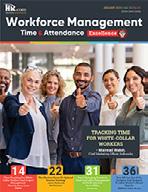



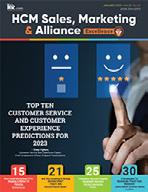

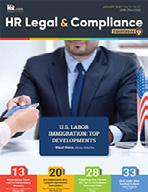



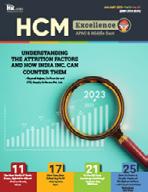
Like to submit an article? Use our online submission form or for more information go to www.hr.com/ExcellencePublications Publications 13 Targeted Publications to Reach Your Audience Informing, Educating, Enlightening and Assisting HR professionals in their personal and professional development, the Excellence series offers high-quality content through the publications!














 Julie Winkle Giulioni Author, Virtual /Live Keynote Presenter,
Julie Winkle Giulioni Author, Virtual /Live Keynote Presenter,
























 Dragos Badea, CEO, Yarooms
Dragos Badea, CEO, Yarooms


































